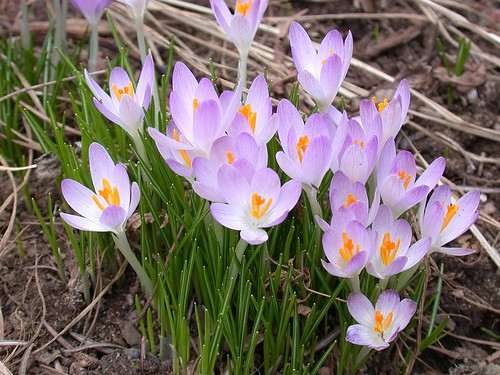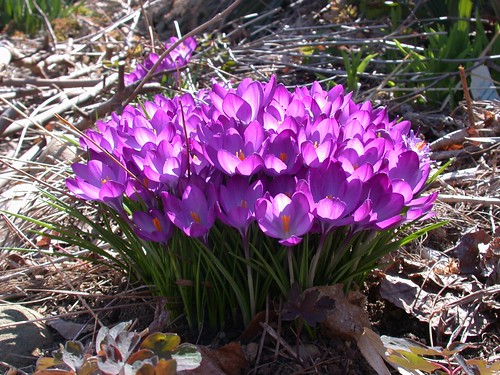
Crocus tommasinianus
After a long and punishing winter, all it took was one beautiful, warm and sunny Saturday for the crocuses to pop open. Crocus tommasinianus, or "tommies" (delightfully known as "elfenkrokus" in Germany), are one of the species more suited to southern gardens with short, relatively warm winters. They are also supposed to be squirrel-resistant and have certainly proven more long-lived and reliable than any other crocus I've attempted here.

Crocus tommasinianus showing natural variability in flower color
The species was originally described by William Herbert in 1847 from plants "found wild in naked mountainous places in Dalmatia [now Croatia].... by Signor Tomasini*, president of the magistracy at Trieste". Flowers range from pale lavender to medium purple.
I obtained my tommies several years ago from Brent and Becky's Bulbs, one of my favorite sources. I also ordered 'Ruby Giant', a cultivar with much larger and deeper purple flowers and usually sold as a selection of this species, but apparently a hybrid. 'Ruby Giant' blooms a bit later and doesn't seed itself around like the species. I prefer it to the species for its saturated color, but keep my tommies around because they're always among the first plants to bloom in my garden every spring... and after a winter like this one, it was quite a relief to see something other than dead plants or snow. Now if only spring would stick around for a while! Depending on whose forecast you trust, we have anywhere from two to eight inches of snow predicted by tomorrow morning.

Crocus 'Ruby Giant', blooming in March 2009
*The specific epithet "tomasinianus" has since been corrected to reflect the accepted spelling of Muzio Giuseppe Spirito de Tommasini, a.k.a. Mutius von Tommasini, after whom many plant species are named.

No comments :
Post a Comment